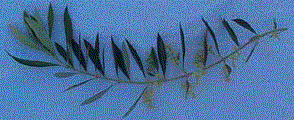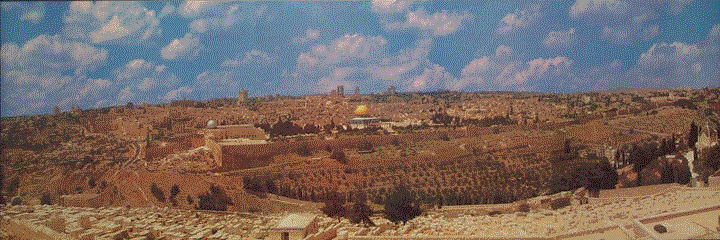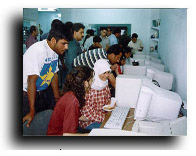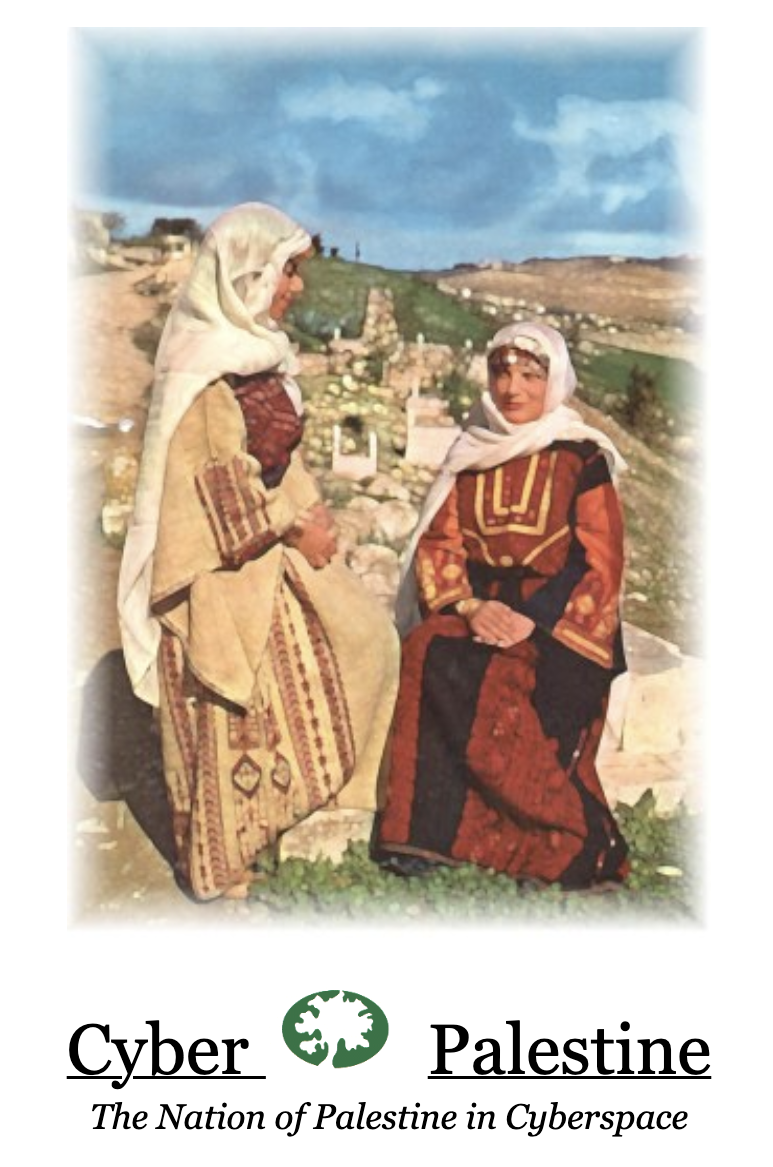Documenting Dark Sousveillance with the Palestine Online Web Archive
 The following website was created as a media analysis project for Surveillance and Power , a course taught by Professor Alix Johnson at Macalester College in Saint Paul, Minnesota. My name is Nelson Mondale— I am a white American college student who has never been to Palestine, and has in turn constructed an image of the Palestinian people through the people around me and the digital media that I consume. I am interested in digital history and surveillance within a digital landscape, and my hope is that this essay can provide a valuable understanding through a US-centric lens of the functionality of surveillance and digital media as to the value of preserving and engaging with Palestinian cyberculture. Website Created Sunday, March 30, 2025.
|
| GUESTBOOK ENTRIES |
|---|
International Connections "As a palestinian, I have been searching for Palestine along with my Diaspora since I was born 40 years again. I have only found blacks and blacks. But one thing is certain, Mahmood Darweesh and Al-Karmel, they give together the smell and taste of our PALESTINE which we will continue to love and wait, Wait for its freedom, and for the smell of "za'tar". Jamal Ali <jamalali@forum.dk> Abu Dhabi, UAE - Friday, August 04, 2000 at 16:23:03 (IDT)" |
Multilingual Resistance "Adelante con la voz de los opremidos del mundo. La cultura es patrimonio de la humanidad, Al karmel tambien lo es. Mohamed B. <amsaadia@yahoo.es> Madrid, Spain - Monday, August 21, 2000 at 19:10:24 (IDT)" |
Strategic Visibility "for years we have been searching for a way to bring us closer to the man whom we grow up singing his poem ,the man that made us very proud of who we are.thanx for the opportunity tawfeek <tawfeeki@aol.com> tomsriver, usa - Sunday, August 13, 2000 at 17:39:24 (IDT)" |
Cultural Memory and Documentation "I love PALESTINE, and the village of my father and grandfather is "Daboorieh" near "Al-Nasereh" in North Palestine. I have never seen "Daboorieh", nor my relatives who still live there , but I must be back in the future. I'm 10 years old... and love Darweesh and Marseel Khaleefeh. Mohamad Ameen Mohamad Khaleel Mashhadawi <mohdameen90@yahoo.com> Abu Dhabi/Damascus, UAE/Syria - Friday, August 04, 2000 at 16:32:54 (IDT)" |
The Al-Karmel guestbook is one of four message boards and guestbooks featured in the Palestine Online web archive, all acting as digital spaces that catalyze a similar process of dark sousveillance.
 Case Study 2: Map of Destroyed Palestinian Villages: A Reign of Terror & Systematic Expulsion and Simone Browne's Looking Back
Case Study 2: Map of Destroyed Palestinian Villages: A Reign of Terror & Systematic Expulsion and Simone Browne's Looking Back

This website features an interactive map entitled "Destroyed Palestinian Villages: A Reign of Terror & Systematic Expulsion", created Center For Research & Documentation of Palestinian Society in 2000. The map is a collection of markers, each representing a village that was destroyed by Zionist colonists before, during, and after the foundation of the State of Israel (15 May 1948). (Please reference note within website homepage as to the use of the term "Zionist" in this context.) Users can click on each marker to learn more about the village, its past, and how it looked in the year of the map's creation.
Palestine Online Embedded Iframe: Destroyed Palestinian Villages
Through this digital mapping project, the Center For Research & Documentation of Palestinian Society practice what Simone Browne describes as "looking back" - a form of resistance to surveillance that transforms the conditions of visibility and challenges attempts to erase history (Browne 2015, 62). The map functions as a powerful tool of self-representation, making visible what has been systematically erased from the physical and cultural landscape. Each marker on the map represents not just a destroyed village, but a site where Palestinians can exercise their right to look back and document their presence. In this way, the map embodies what bell hooks (cited by Browne) calls "talking back" - converting Palestinians from objects of representation to subjects who can represent themselves and their experiences on their own terms (Browne 2015, 58). The interactive nature of the map, allowing users to click through and learn about each destroyed village, creates a digital space where Palestinian history and presence can be actively engaged with, rather than passively observed.
Through this digital mapping project, Palestinians create what Aouragh describes as "virtual space" that functions as a form of resistance to physical territorial control (Aouragh 2011, 41). In the forced absence of physical sovereignty over their land, Palestinians use digital technologies such as the map to establish boundaries of Palestinian space, transforming the map into what Aouragh calls a "techno-political infrastructure" that enables Palestinians to maintain claims to their land and history (Aouragh 2011, 41). This digital territory, as Aouragh argues, becomes a space where Palestinians can "construct identity" and maintain community ties across borders, demonstrating how virtual spaces can serve as sites of resistance to physical surveillance and control (Aouragh, 2011 41).
By combining Browne's concept of "looking back" (Browne 2015, 62) with Aouragh's analysis of virtual space (Aouragh 2011, 41), the map functions as both a tool of oppositional gazing that challenges historical erasure and a digital territory that enables Palestinians to maintain claims to their land. Like the artistic works Browne describes - Robin Rhode's Pan's Opticon and Adrian Piper's What It's Like, What It Is #3 (Browne 2015, 58) - the map serves as a creative intervention that disrupts surveillance and challenges attempts to control Palestinian narratives.
Village Documentation``: Al-Faluja
| VILLAGE INFORMATION |
|---|
Al-Faluja before 1948 "According to the villagers, al-Faluja was founded on a site that had been known as Zurayq al-Khandaq. Zurayq means \"blue\" in Arabic and is the vernacular name for a leguminous plant with blue flowers, turmus (lupine), which grew around the village. The name was changed to al-Faluja to commemorate a Sufi master, Shahab al-Din al-Faluji, who came to Palestine from Iraq early in the fourteenth century, settled near the village, and was buried there." |
Al-Faluja Today "The foundations of the village mosque and fragments of its walls are all that remain of al-Faluja. Debris is piled or scattered where the mosque once stood. A dilapidated well and a cistern are still visible. Israeli government offices and an airport have been built on the surrounding land." |
 Conclusion
Conclusion
The evolution of Palestinian digital resistance into a contemporary understanding reveals both the transformative power of digital technologies and the increasing sophistication of surveillance and censorship mechanisms. As Omar Zahzah argues in Refusing the Language of Silence: Palestinian Resistance Goes Digital, what began as a promising space for Palestinian self-representation has evolved into a complex battleground of "digital/settler-colonialism" where Big Tech companies actively facilitate Israeli colonial control. (Zahzah 2024) This shift is particularly evident in how platforms like Meta have moved from passive censorship to active complicity in surveillance and repression. For instance, WhatsApp's metadata was used by Israeli forces to generate "kill lists" through AI systems like Lavender, Meta's potential policy changes that would effectively ban anti-Zionist speech by misclassifying it as hate speech. (Zahzah 2024) However, as Khamis and Dogbatse document, Palestinian women activists like Bisan Owda have leveraged platforms like Instagram and TikTok to document genocide in real-time, to a vast global audience, even as they face these systematic targeted attacks and communications blackouts. (Khamis, Dogbatse 2025) These developments demonstrate how digital spaces have become both a powerful tool for Palestinian resistance and a contested terrain where colonial power seeks to maintain control.
This archive documents the impact and processes of dark sousveillance, and stand as living monuments to the digital Palestinian territory of how digital technologies can be subverted, and can become collosal tools of resistance and visibility, even in the face of oppresive coloniality.
 Bibliography
Bibliography
| REFERENCES |
|---|
Aouragh, Miriyam. Palestine Online: Transnationalism, the Internet and the Construction of Identity. Bloomsbury Publishing, 2011. |
Browne, Simone. Dark Matters: On the Surveillance of Blackness. Duke University Press, 2015. |
Foundation, Processing. "Fellows in Focus: Digital Resistance & Palestinian Web Archives with Amad Ansari." Processing Foundation (blog), February 6, 2025.https://medium.com/processing-foundation/fellows-in-focus-digital-resistance-palestinian-web-archives-with-amad-ansari-7a5924ac9aa5. |
House, MONGID | Software. "Al-Karmel Magazine - Yasser Arafat Museum." Accessed March 19, 2025.https://yam.ps/page-12214-en.html. |
Janus, Rose. "The Palestinian Internet of the 90s Is Being Preserved, One GIF at a Time." VICE (blog), November 29, 2023.https://www.vice.com/en/article/palestine-internet-preserved-90s-gifs/. |
Khamis, Sahar, and Felicity Sena Dogbatse. "'I'm Bisan from Gaza and I'm Still Alive': Palestinian Digital Feminism and Intersectional Narratives of Resistance | Request PDF." ResearchGate, March 4, 2025.https://doi.org/10.20897/femenc/16025. |
"Palestine Online: Al-Karmel Guestbook." Accessed March 21, 2025.https://palestineonline.net/?site=al-karmel-guestbook. |
"Palestine Online: Destroyed Palestinian Villages: A Reign of Terror & Systematic Expulsion" Accessed March 21, 2025.https://palestineonline.net/?site=villages-map. |
Zahzah, Omar. "Refusing the Language of Silence: Palestinian Resistance Goes Digital." CounterPunch.org, July 5, 2024.https://www.counterpunch.org/2024/07/05/refusing-the-language-of-silence-palestinian-resistance-goes-digital/. |



